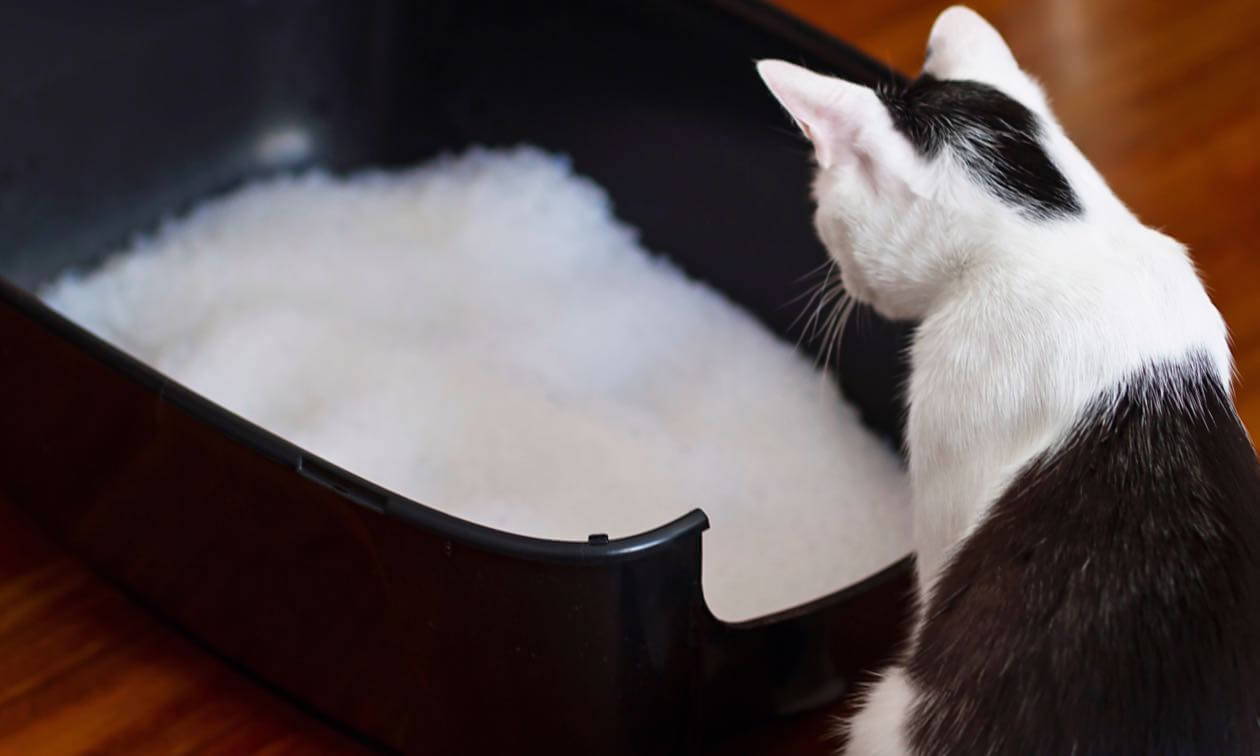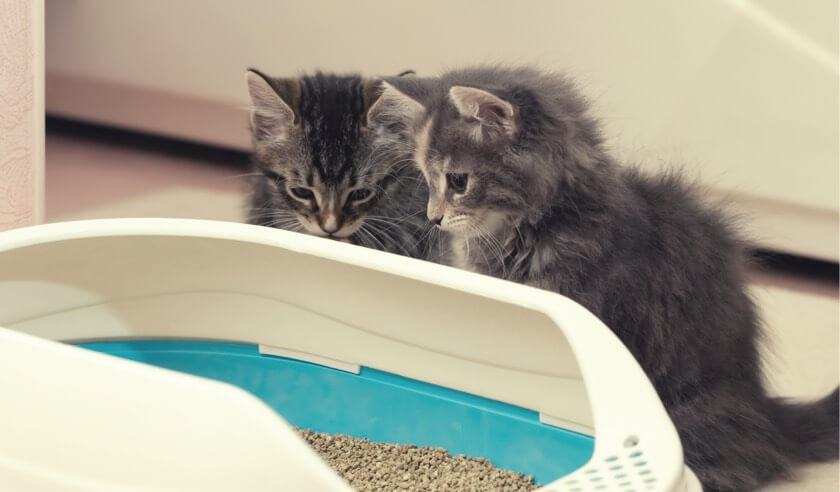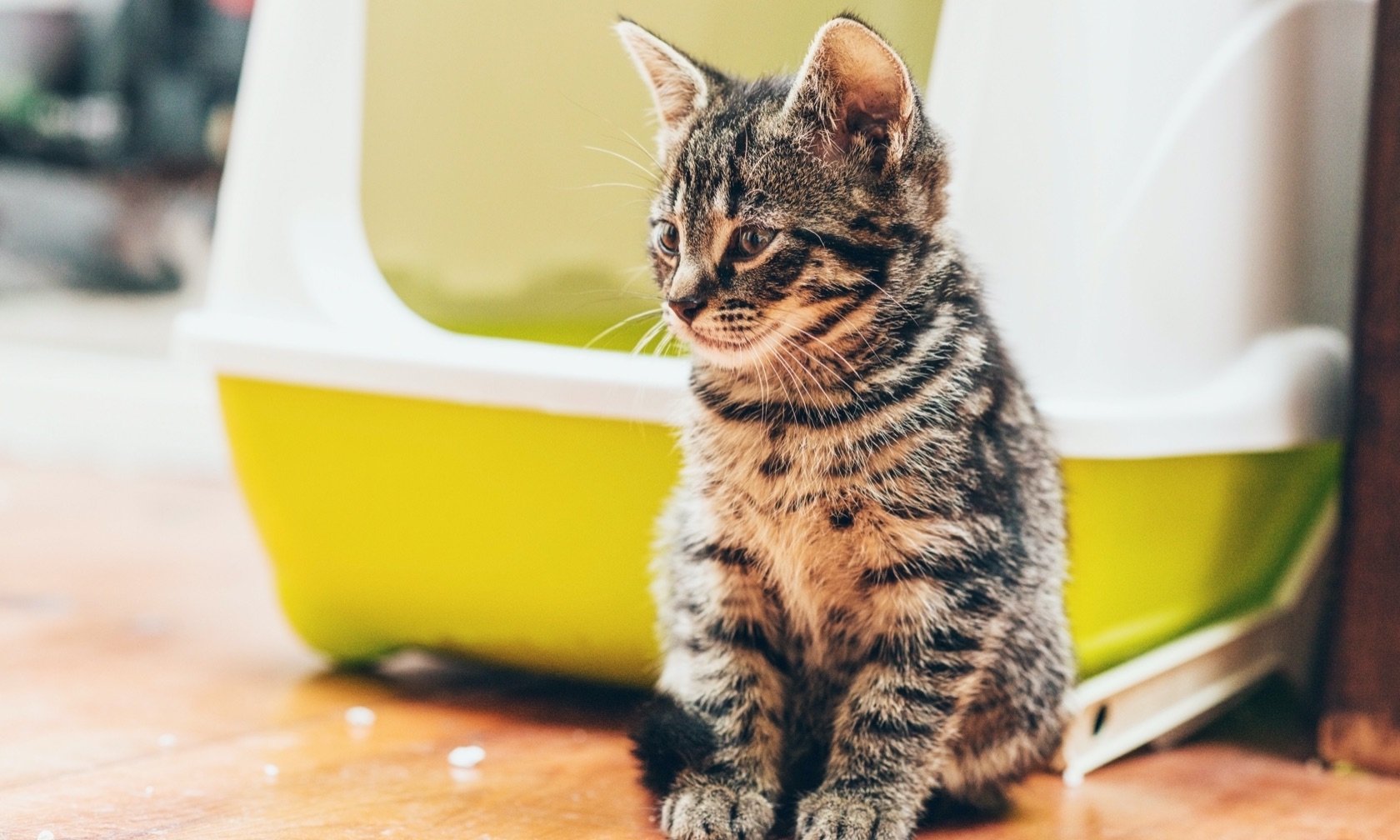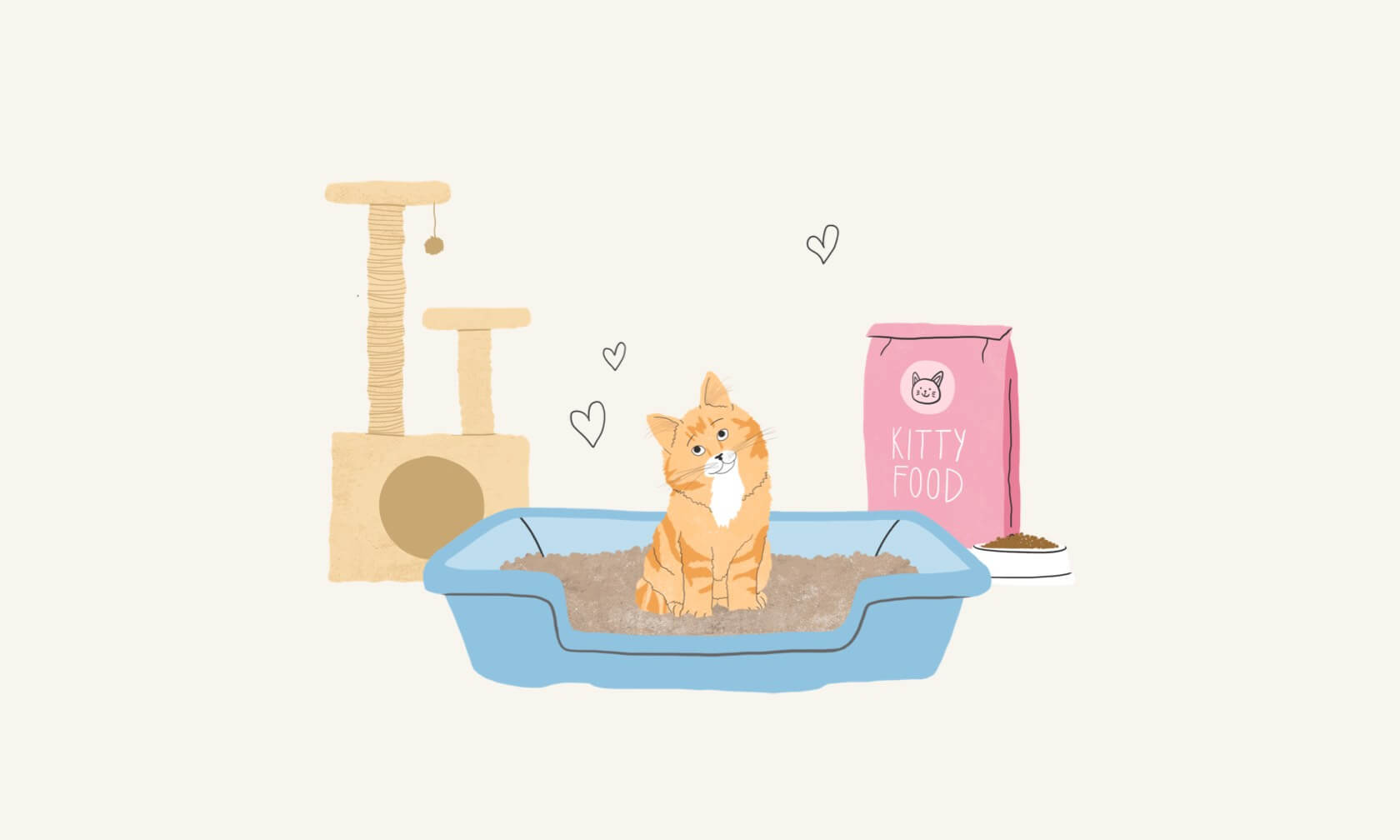Did you know that the litterbox can be a big stressor for your cat? The type of litter you choose is a significant factor — not only can it affect your cat’s interest in using the litterbox, but also their health and yours. Navigating the different cat litter types on the market can be challenging, so it’s important to do your homework.
Clay Litter
This is generally a cat’s preferred litter. Most cats are happy with a medium or fine-grain clay litter because it resembles the sand or soil they’d choose outside. Clumping varieties are best for cleanliness. Always go with an unscented litter for you and your cat’s respiratory health.
Clay litters are known to track out of the box, which can be frustrating. They can create a lot of dust that can aggravate allergies. Washing the box every few weeks can be challenging if the clay and moisture leave you scraping concrete-like messes.
Silica Gel Litter
These litters are made with silica gel and come in various grain sizes, from ultra-fine to larger crystals. They are not designed to clump. Instead, the silica absorbs the urine and is said to reduce odor. Urine-soaked grains aren’t removed — the urine dries within the silica, and you dump the entire box and replace the litter regularly. There are also color-changing options advertised to help you monitor your cat’s urinary health.
Some brands are loaded with chemicals that you may not want to expose your cat to. Others use very large crystal-like grains that are uncomfortable on the paws and limit digging. Breathing silica dust can be a health risk for cats and humans. Prolonged exposure has been tied to lung disease in humans and respiratory infections in cats[1].
Wheat and Corn Litter
These are generally lighter and softer than clay and other types of litter, which can be helpful for cats with paw pain or cat parents who have difficulty lifting heavy things. They can be found in both clumping and non-clumping varieties. They’re often considered more environmentally friendly than silica and clay.
Strange as it sounds, litter made from potential food sources can confuse cats. If they eat the litter, they certainly won’t want to eliminate in it. These litters can also attract pests. You may find that your cat sinks into the softness of wheat or corn litters, which many don’t enjoy. Allergies can also be a concern.
It has been suggested that corn litters are susceptible to growth of mold that can produce dangerous substances called aflatoxins[2]. Corn is prone to this mold before and after it’s processed. Moisture is a contributing factor, which can be a concern in a litterbox or moisture-heavy rooms where litterboxes tend to be located, like bathrooms and basements. Generally, during manufacturing, the litter is tested for and treated to minimize the chance of a batch being contaminated with aflatoxin-producing mold. It’s important to store your litter in a clean, dry place before use and discuss litter options with your veterinarian if you have concerns.
Pine Litter
This is another litter that comes in clumping and non-clumping varieties. The non-clumping is usually in pellet form. While many consider it more environmentally friendly, it’s also heavily scented and can be a turn-off for cats and people. The pellet version may be less comfortable on paws. Lastly, keeping the litterbox clean can be challenging without dumping the whole box and refilling it often.
Paper Litter
Made from paper, these litters are usually in small pellet form. They can be soft on paws, and dust and tracking are less of a concern. However, they aren’t made to clump, so keeping the litterbox clean is difficult. They also aren’t known to control odors very well. They can be a great option if your cat is recovering from surgery or has an open wound that needs to be protected from dust and other ickiness.
Walnut and Grass Litter
These are both biodegradable natural options. Grass litter is made from grass seed and can be soft on paws. Ground walnut shells make up walnut litter. Both come in clumping varieties and tend to be lower in dust. You may find tracking to be an issue, particularly with the lighter grass litter. Allergies can also be a concern, as well as pests.
Wood Litter
You can also find biodegradable wood litter. It comes in grain or pellet form, and non-clumping and clumping varieties. The grain is soft and can be more comfortable for cats with paw issues. The pellet form can be less comfortable for cats to use and, as with all pellets, has limited ability to manage feces odor.
Special Things to Consider When Choosing Litter for Your Cat
Most cats prefer a medium- to fine-grain clumping litter. Some individual factors and situations can impact your cat’s litter needs.
- Mobility
As cats age or experience musculoskeletal issues, they may lose mobility. Joint pain, arthritis, and other medical problems can make it harder for them to get around. Larger-grain litter, pellets, and even too much litter will make them feel less stable in the litterbox (and it’s harder to dig and bury). This could lead to house soiling because using the litterbox is uncomfortable. - Paw Pain
Very common in declawed cats, paw pain can impact a cat’s willingness to use a litterbox, especially if the litter is hard and large-grained. Harder crystal and pellet litters are more painful for declawed cats or cats with other paw issues like infections or ingrown claws. - Allergies
Some litters create more dust than others. They can also be made from various ingredients that can trigger allergies for you or your cat, like grass or wheat. Some even have natural or added scents that are way too strong for cats and can cause respiratory issues. - Age
Young kittens are prone to eating litter. Experts recommend non-clumping litter or pellet litter until they’re past this stage. - Individual Tendency to Ingest Litter
All litters pose a risk if your cat is ingesting them. And remember, if it sticks to a cat’s feet, it will get licked off. If your cat gets a lot of litter stuck between their toes or chooses to eat litter from the box or floor, talk to your veterinarian about whether you should avoid silica and clumping litter. Both can be more likely to cause blockages in the gastrointestinal tract based on their reactions to moisture.
Switching Your Cat’s Litter
If you want to try a different litter for your cat, make a gradual transition. Mix a small amount of the new litter into the old litter. Over a few weeks, lessen the amount of the old litter and increase the amount of the new litter until you’re using only the new litter. If your cat continues using the litterbox and seems comfortable with the change, you should be good. If you notice a difference in your cat’s behavior before, during, or after using the box, they may not be enjoying the new litter. Jumping out of the box immediately after using it, a change in how they dig and bury, getting in the box but leaving before using it, or eliminating just outside the litterbox are all indications they may prefer the old litter or something about the new litter isn’t meeting their needs.
ZPC-02229
- Is Silica Litter Toxic. Vetinfo. https://www.vetinfo.com/silica-cat-litter-toxic.html. Accessed May 25, 2022.
- Aflatoxin Poisoning in Pets. U.S. Food and Drug Administration. https://www.fda.gov/animal-veterinary/animal-health-literacy/aflatoxin-poisoning-pets. Accessed May 25, 2022





